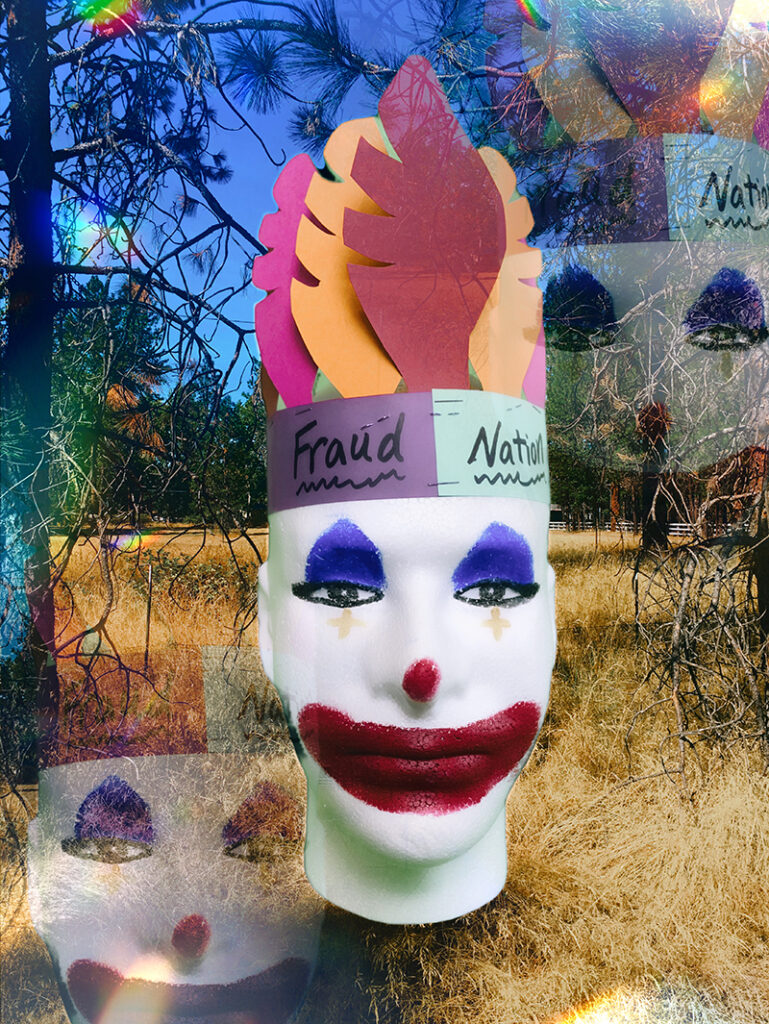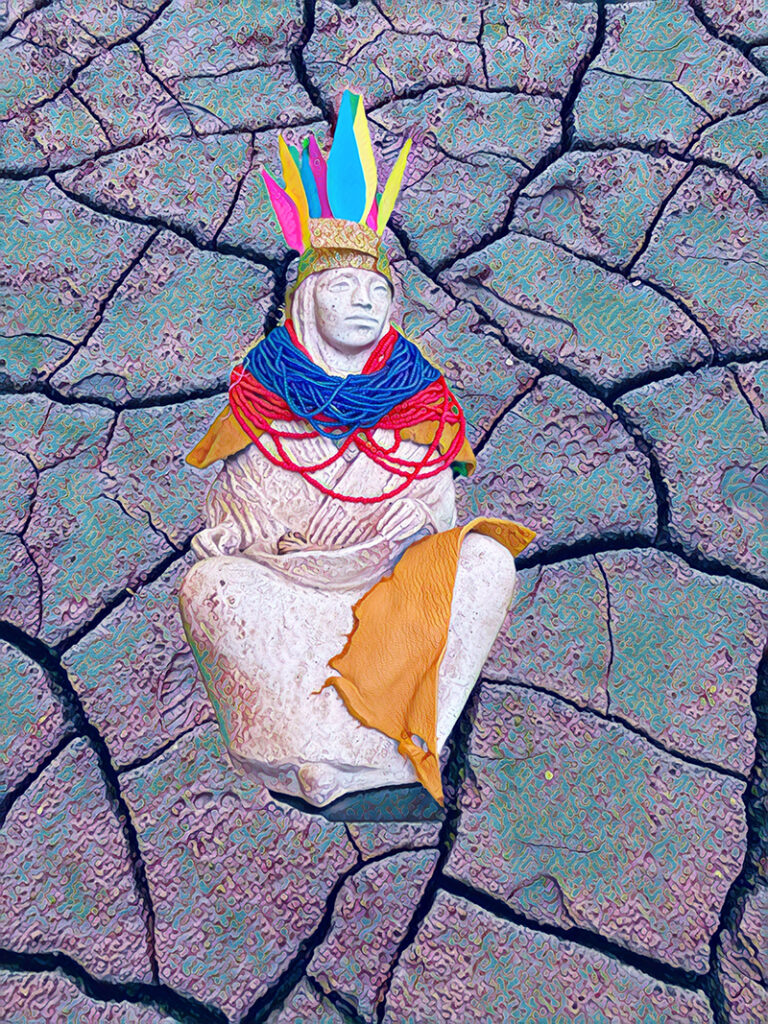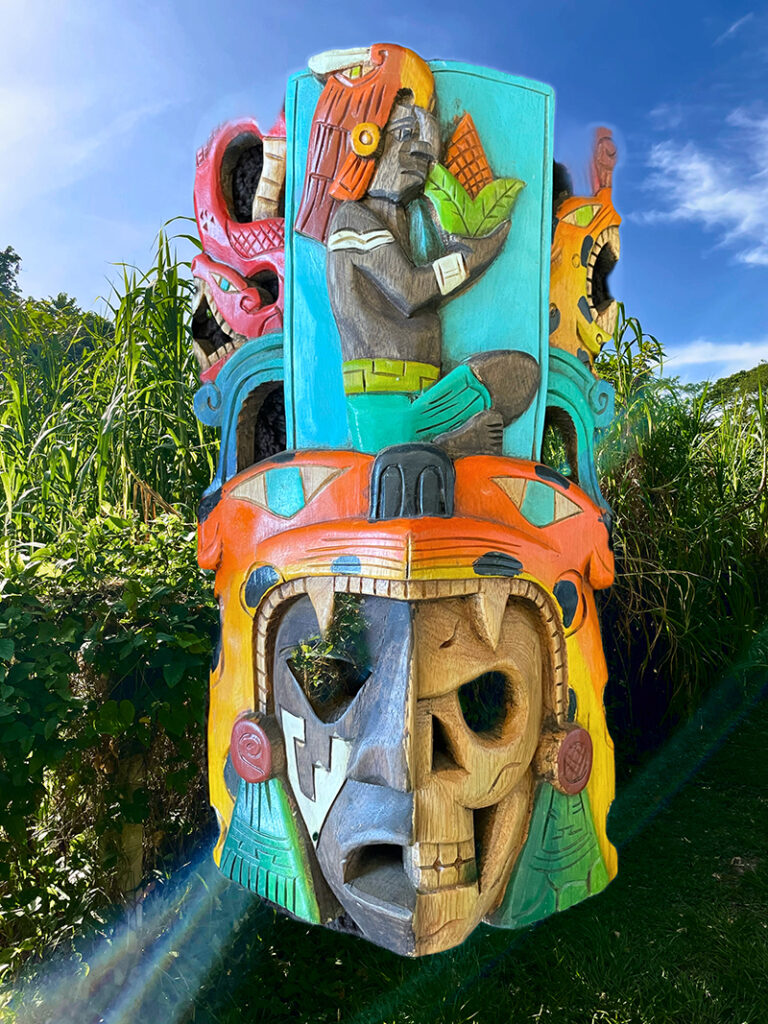Pretendians in Dance
BY SNOWFLAKE ARIZMENDI-CALVERT; IMAGES BY SNOWFLAKE ARIZMENDI-CALVERT
Note: This essay was first published in Stance on Dance’s fall/winter 2022 print issue. To learn more, visit stanceondance.com/print-publication.
Pretend + Indian (NDN/Native) = Pretendian
Pretendian: a term used for a person who commits ethnic fraud and cultural appropriation by falsely claiming to be from an Indigenous nation of North America.
This article is intended to make Indigenous and non-indigenous people aware of an ongoing problem that has been around in many areas of US, Canadian, and Mexican societies for decades and in some cases for more than 100 years. In the dance world at large, I am unclear how long pretendians have been a problem, but it is sadly not a new problem. The Indigenous peoples who live in the countries of Canada, the US, and Mexico are not a monolith: there are more than 630 government-recognized First Nations, Inuit, and Métis tribes in Canada; in the US, there are 574 federally recognized Native tribes from 48 states and Alaska; within Mexico there are 68 distinct ethnic groups of Indigenous peoples. I have often heard the phrase “Native American culture” used as a generalized singular reference. The phrase should always be plural and tribe-specific whenever possible. Though there may be some similarities and influences among Native nations, the languages/dialects, traditions, histories, ancestral lineages, foods, spirituality/religions, etc. are tribe-specific to each nation. The terms Indigenous, Native American, First Nations, and Indio/Indigena are not tribes or nations, but are very general terms for these groups as a whole. Most individuals and tribes prefer to identify themselves using their specific people’s name.

My personal experience
I’m not interested in calling out anyone or naming names, as that has already happened outside of this article. I want to create awareness of the pretendian problem in professional dance communities, and to give tools to address if someone is falsely claiming Native heritage. This becomes a problem in the San Francisco Bay Area where I live and work and in many dance communities around the world. Opportunities are being carved out exclusively for Indigenous, Black, and other marginalized groups who have historically and systemically been discriminated against and put at a disadvantage for grant money, jobs, awards, and performance opportunities. It has been heartwarming to see so many individuals and arts organizations working towards equity for all dancers. However, while there may be promising changes happening, unfortunately there are non-indigenous artists appropriating Indigenous identities and taking advantage of these equitable intentions.
I danced for a company for more than five years, which once promoted itself as the largest Indigenous dance company in the world. It was an ensemble of dancers who came from multiple Native North American nations and Indigenous peoples from other parts of the world. The artistic director/founder had claimed an obscure paternal family lineage to the Blackfoot Nation, Algonquin Peoples, and Métis Nation. In 2018, the director was found to have zero family connection or lineage to any Native nation in Canada or the US. This person to this day also claims “Hunka Lakota” in bios and in formal introductions. To many non-Lakotas, Hunka Lakota sounds like a tribe, but is actually not. The Hunka ceremony is a Lakota adoption custom dating back to ancient times that joins individuals and families into deep kinship ties. This ceremony has nothing to do with tribal enrollment or legal adoption.
Creating strong kinship ties is a common practice for many cultures. I was ceremonially adopted by my Kookum (grandmother) Carol of the Michel Band First Nation. By no means, does my kinship with Carol mean that I am now a part of the Michel First Nation. I cannot claim them as my people, and they do not claim me. You must be a legitimate descendant of the Michel Band with proof in order to enroll in their nation. Another example from my own life is my Korean “godfamily,” the Yu family. Our families have been very close since decades before I was born. The Yus immigrated from Korea around the time my dad came to the US from Chiapas, Mexico. The Christian-English term “godfamily” is used among us because we don’t have a strong enough term to describe the history and connection our families share with each other. We freely have cultural exchanges between us; our parents even went into business together. I am very familiar with Korean culture because of their influence in my life. But just like with Carol and her nation, my family connection to the Yus does not make me Korean. Exploiting those connections and presenting yourself as if you are a part of a tribe that’s not your own for the purpose of financial gain is a deception. It preys on people’s naiveté and ignorance of Native nations, thereby taking from the limited and exclusive opportunities available for Native artists.
Another problem arises when a pretendian dresses in native patterns or regalia, wears Native-looking jewelry, and speaks in “we” statements. Our respective cultures are not a costume, fashion accessory, or a new age way to get in touch with the earth, but are rooted in family lineages, specific regions of land, and personal lived experience within our cultures. A pretendian further adds to Native erasure when they start to speak on behalf of Indigenous people they don’t belong to and of the lived experience they never had. These include using “we” statements or overgeneralized terminology such as global-Indigenous or pan-Indigenous; only using ‘Indigenous’ to self-identify instead of a specific tribe; or referencing a specific nation’s cultural teachings to gain credibility as if all other Native nations possess the same teachings. I recently had a pretendian try to volunteer for an event I was helping to produce. He talked for an hour and a half about how he was Native and kept referencing “the Great Law of Peace” as if I should know it. My family’s people have had their own laws since time immemorial. I decided to Google this person’s name with “pretendian” after it. Official statements from every tribe that this person has ever claimed to be enrolled in came up in the search. Each of the tribes stated that he had never been enrolled and they don’t know who he is.
Another example of a pretendian tactic is the descendant claim. Many people claim to have a great-grandparent four to seven generations ago that was a Native princess, yet they have never researched their family’s story, have zero cultural connection to the alleged ancestor’s tribe, and their ancestors have never even lived in that tribe’s territory. One of my own ancestors, who lived in Santa Fe, New Mexico in the 1600s, is documented as being from the Tigua Tribe and was a servant in a Spanish household. She eventually was impregnated and married off to the head of that family. This, like the other examples, in no way makes me from the Tigua Tribe. Every ancestor succeeding her in my lineage never had children with another Tigua person. This one Tigua ancestor does not qualify me for tribal enrollment, nor would a DNA test prove anything. It would be highly inappropriate of me to claim that I’m from this tribe, or to even say that I’m a Tigua descendant. I have a Tigua ancestor from the 1600s. Full stop.
A pretendian enacting these behaviors creates distrust between individuals, tribes, and Native communities. When a Native person innocently co-signs or welcomes a pretendian to a specific group or tribal community, trust can be broken when the truth comes to the surface. Hurt, fear, doubt, and anger are some of the feelings that come up for people. Pretendians can ultimately damage relationships within communities. Many Indigenous cultures value long and deep relationships, respecting the history created by two or more parties. Pretendians can cause setbacks in fostering these valued relationships, not to mention how generational trauma can be triggered by their actions directly and indirectly for so many Natives.

Who claims you?
In my experience, it is a very common practice for Indigenous people of North America to inquire and share about their respective tribal communities. It’s common to ask someone upon meeting them the following questions:
What tribe/nation are you from?
What is the name of your people in your language?
What community are you and your family from?
Who claims you?
Who is your family/clan?
Each individual may answer differently according to their culture and tradition. Usually, people are very proud to share where they come from. In my experience, pretendians tend to get upset by these questions. They will deflect from getting too specific, and their tribal claims will change dramatically over time. Some pretendians will accuse other non-Native people of violence or accuse actual Natives of lateral violence for even asking these simple questions. I am not suggesting nor recommending a non-Native person aggressively interrogate someone and ask to show a tribal ID; that would be missing the point. If you are going to ask an Indigenous person these questions, be ready to offer information where your family is from. Example: I’m mixed European, Scandinavian/Irish/British, and my family immigrated to the US about four generations ago.
In my lifetime, I have been privileged to have met so many wonderful Indigenous people from all over the continent, but there are still many nations I have not yet heard of. When I don’t know about someone’s people, if it’s appropriate, I will ask if they are willing to share about their people, and I always reciprocate. I find this to be a wonderful way to connect with another Indigenous person and learn about them through their perspectives. When the situation isn’t appropriate to ask, I turn to the internet and tribal websites. I find this to be a useful tool to help determine if a person is a pretendian or not, like in the case of someone claiming to be Cherokee. There are more than 200 fake Cherokee tribes in the US and only three historic federally recognized Cherokee tribes. Most historic Native nations in the US and Canada have websites. These websites will have useful information to help you determine if a tribe has government recognition and/or has historic legitimacy as a Native/First Nations community. Each nation’s government has its own sovereignty over who and how it claims tribal members. It is not up to an individual to self-identify as a tribal citizen of a particular nation.
For Indigenous people of Mexico, it sometimes can be a little harder to investigate a person’s claim. Mexican Indigenous peoples have maintained their ethnic and cultural identities, languages/dialects, tribal affiliations, are still living in their historic communities on their land, etc. These Indigenous tribes don’t have a system of tribal enrollment because the government of Mexico does not give federal recognition like the US and Canadian governments have for northern tribes. There are a lot of Mexicans who claim Indigenous ancestry. Some of those Mexicans are descendants of detribalized people whose family has lost their Indigenous connection generations ago. So asking “What community are you and your family from?” is a very important question. This will help determine the difference between someone having detribalized ancestors versus having living family members from Indigenous communities. The multitude of “pre-Hispanic Mesoamerican” dance groups who perform in fairs and local community events in the US and at tourist destinations in Mexico are not the Indigenous communities I am referring to. A few examples of actual Indigenous peoples are the Tzotzil of Chiapas, the Wixarika of Jalisco, and the Yoeme of Sonora; all three of these tribes can get very specific about where they come from and who their families are. Again, asking the above questions will yield specific answers of where that person comes from, the name of their people, the region and town their family lives in, and a living connection to their culture.
A sad reality is that a pretendian can still lie about their answers to these simple questions. This behavior is very problematic when the results are that this person gets awarded grant funding, is given positions in academia, and is invited to be a featured artist. When the standards and framework of Indigenous contemporary dance are shaped by the works of pretendians, it changes a non-Indigenous organization’s perspective on what Indigenous contemporary art is and can be. Actual Natives can then be overlooked or seen as “not Indigenous enough” for European-American eyes. When non-Indigenous choreographers receive funding that is intended for Indigenous choreographers, it aids in disenfranchising Native artists. Indigenous artists should be able to set their own standards for their work without having to play into falsely accepted tropes for funding.
I hope those of us working towards equity for all dancers will stay vigilant when it comes to the pretendian problem. To non-Indigenous people, it will be messy, painful, and scary, but with practice you can learn how to handle it with grace. It is okay to ask these simple questions. For Indigenous artists, keep making beautiful works of art for yourself and your people. Current and future generations of your tribe will find inspiration from you and your work. No matter what space you occupy, stay strong in your culture and be proud of where you come from.

Tzeltal decoration mask (non-ceremonial) from Chiapas of Yum Kaax, the Mayan diety of corn and protector of plants and animals
~~
Snowflake Arizmendi-Calvert (she/her) is a Two-Spirit performance artist of Tzotzil of Simojovel, Yaqui of Sonora, and Raramuri of Chihuahua heritage. As a professional dancer, drag performer/event host, and entrepreneur, Snowflake produces LGBTQ+ events as platforms for political, social, and cultural activism. Currently, she’s co-producing Seeds and Sequins: a queer dance project of collaborative work, and is a dance collaborator of The TRY Project. Snowflake is also an Isadora Duncan Awards committee member and is on the organizing committee for the Queering Dance Festival.
Note: This essay was first published in Stance on Dance’s fall/winter 2022 print issue. To learn more, visit stanceondance.com/print-publication.

One Response to “Pretendians in Dance”
Thanks for speaking the TRUTH. So important.
Comments are closed.